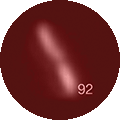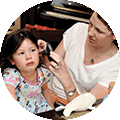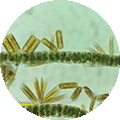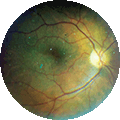
CellScope Loa
CellScope applications |
|
 |

Tuberculosis and malariaIn 2009, the CellScope was shown to detect malaria in blood samples and tuberculosis in sputum samples. |
 |
Ear infectionsThe first commercialized use of CellScope technology was the otoscope, introduced in 2011 to detect ear infections in children. |
 |
Neglected Tropical DiseasesIn Ivory Coast, the CellScope has been deployed to detect soil-transmitted parasitic worm (helminth) infections from stool samples. |
 |
Water qualityThe Southern California Coastal Water Research Project used the CellScope to detect pollution by monitoring natural flora and fauna in water sources. |
 |
Ocular diseasesTwo new CellScope devices for the eye are used to detect cytomegalovirus retinitis infections, diabetic retinopathy, corneal lesions and trachoma. |
Eight years ago, when mobile phones with megapixel cameras were becoming popular, bioengineering professor Dan Fletcher borrowed his sister’s Nokia and challenged his undergraduate class in optics and microscopy to photograph the microscopic world. The goal was to make the phone’s camera comparable to an expensive laboratory microscope. “The constraint was they couldn’t alter the phone’s optics. It had to be a clip-on,” Fletcher says. The students stuck with the project until they’d turned the cellphone into a cell phone, producing sharp images of bacteria, malaria parasites and red blood cells that could be transmitted by email or analyzed directly on the phone.
In the years since, the CellScope has enabled studies of everything from retinal disease in Thailand to water quality in southern California. Instead of rushing to the emergency room when kids have earaches, parents can use the clip-on otoscope from CellScope, Inc., a startup founded by students from Fletcher’s lab, to send a smartphone video to the pediatrician.
This fall, the CellScope team at UC Berkeley is rolling out a new device. CellScope Loa enables safe treatment of river blindness (onchocerciasis) by detecting parasitic Loa loa worms in the blood. Patients with Loa loa infections cannot safely take the drug ivermectin (IVM), standard treatment for river blindness. Initial deployment of the device will target 30,000 people in Cameroon this fall.

